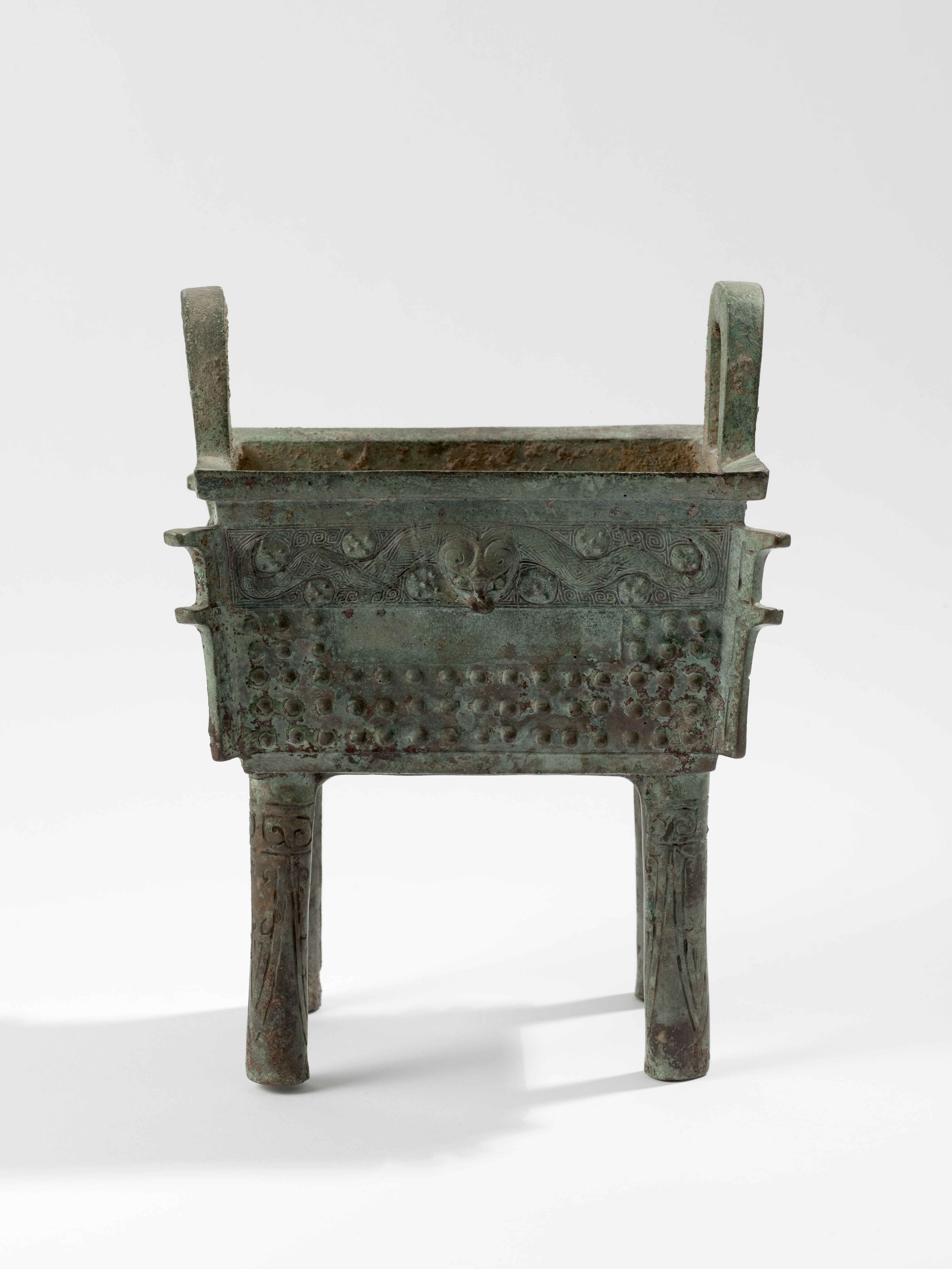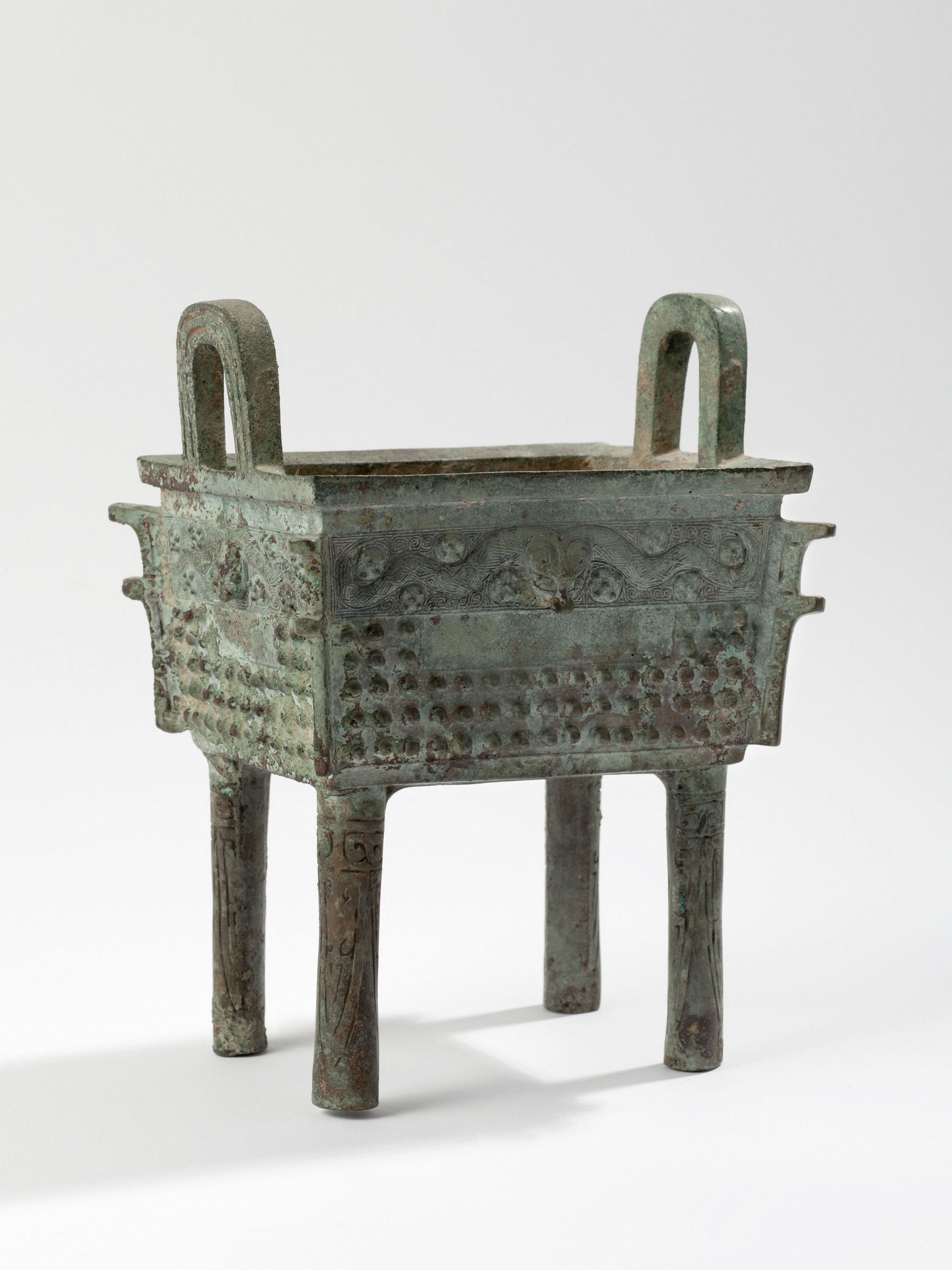
Vase ding 鼎
Bronze, Fonte, Fonte au moule
Vaisselle et ustensile de cuisine, Vase, Objet religieux
Achat
M.C. 7807
The square ding (fangding) originates in the ceramics of the Neolithic period. These food vessels, standing on four cylindrical feet, were common in the Shang and early Western Zhou periods and many have come down to us.
The fine specimen in the Cernuschi Museum can be compared to a fangding found in 1947 in the village of Licun in the Qishan district. The upper part of the both vessels features the same motifs. Rows of points frame a rectangular cartouche on each of the sides. In ancient Chinese literature, these protuberances were called “teats” (ru). They are sometimes interpreted today as sprouting seeds. The upper band features a decor of two serpents meeting in the middle to form a single head worked in relief. The reptiles’ sinuous bodies undulate between small medallions and leiwen spirals.
The Qishan piece, with a heavier design, is thought to date from the early Western Zhou period. Grimacing masks adorn upper part of the feet. The same goes for a fangding in the Hermitage Museum in Norfolk, VA (inv. 50-G-II, cf. Chase, 1991, p. 51, no. 13). On the more slender Cernuschi Museum specimen, the tall cylindrical feet are decorated with triangular motifs, of which there are fewer, and which appear to have disappeared during the Western Zhou period in this location.
